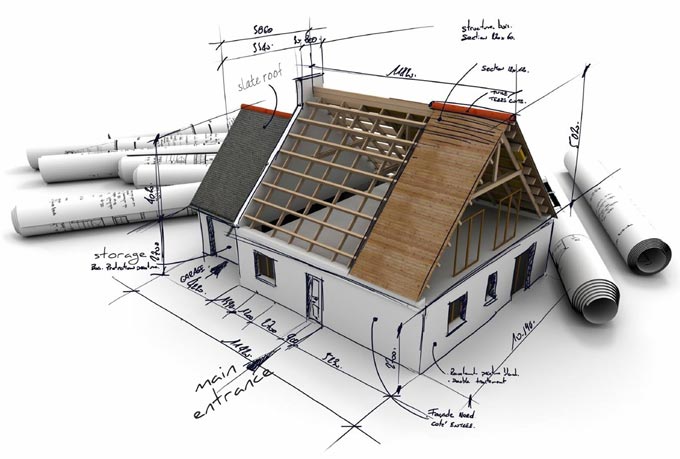WEBSITE DESIGN BRIEF
Websites are a bit like houses...

If you decided that you wanted to build your own house, you would almost certainly draw up a few plans before you started work. For example, you'd probably start out by deciding where you wanted to build the house and what materials you wanted to use. Then you'd decide what rooms you wanted, what each room was for, how you would access each room, and so on. At the same time, you'd have to think about what furniture and open space you wanted in each room. Things like that.
That's more or less the same approach we take when planning a website for your business. To ensure we know what our clients want from their website, we ask clients to explain all these things, with as much detail as is possible. A Design Brief is our architect plan for your website. We take whatever you tell us, add our own input and then use this to move forward.
We ask what you want your website to do, how and why, who your target customers are, how the website will be linked to your business and who your main competitors are. It's pretty basic stuff but without it we're the taxi driver who only got told "Take me home".

Want to write a design brief?
If you have the time and inclination, writing a website design brief (as if giving instructions to us) can help you understand what you want your website to do and why. If you give your design brief to a designer, he or she will use it as a reference throughout the design and creation process. Explaining your website to yourself is a useful process as it makes it far less likely that you'll forget something important!
Where to start..
Start out by explaining what your business does, and then move on to the objectives you have in mind for your website, specific or general.
Who are your target visitors?
Ask yourself who you want your website to attract, who they are, where they are from, what they will want to find on your website, and so on. What do you want these people to do when they arrive on your website? These things can affect major factors in terms of how your website navigation is structured.
Other Items
Think about the things you want added to your website. This might be things like photos and videos that you want built in, or things a designer needs to create or edit.
For example
- Have you thought about what colour scheme you want to use, perhaps to match your existing marketing? If you have specific colours in mind, you'll need to provide the colour HEX code, and explain how and where those colours are to be used.
- Do you have a business logo you want to use? If so, think about how and where, and whether alterations to it are possible or required.
- Do you have instructions regarding your business/company name, registered trademarks, brand names, and so on?
- Are you going to provide your own images for use on the website? If so, you'll need to tell your designer about them and track down the best possible quality version of them.
- If you don't have any suitable or appropriate images, are you planning on hiring a photographer, or will stock (generic) images be good enough?
- Depending on your inclination, you'll need to think about the text for each page. If wanted, our designers can take a basic text of maybe a couple hundred words and revise and extend it to ensure Google can properly imndex and identify it.
- Do you want or need a multilingual website? If so, think about which languages are to be used, and where the translated text will come from.
- We do work with a small group of translators so we may be able to arrange translations if you can specify the language(s).
Upgrading an existing website?
If you already have a website for your business and want to upgrade it, for example to modernise an old website, replace one of those horrible free websites offered by many host companies or to make an existing website responsive (good for visitors with normal or mobile browsers), explain what needs changing - parts you want to retain, parts you want to remove and whatever you want adding. All these things will help you understand what you truly want, and also help your website designer make them come to life!

